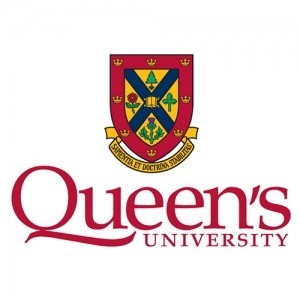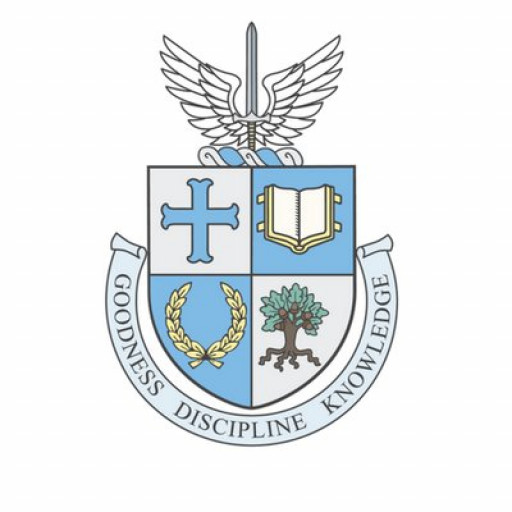Photos of university / #queensuniversity
Introduction to Astronomy and Astrophysics at Queen's University offers a comprehensive and deep exploration of the universe, merging theoretical understanding with practical research skills. This undergraduate program is designed for students fascinated by the cosmos, celestial phenomena, and the fundamental laws governing the universe. The curriculum covers a broad range of topics, including the physics of stars, galaxies, and cosmology, as well as observational techniques and data analysis. Students will have access to state-of-the-art telescopes and laboratories, enabling hands-on experience in astronomical observation and instrumentation. The program emphasizes critical thinking, mathematical modeling, and scientific communication, preparing graduates for careers in research, academia, or industry sectors related to space and scientific analysis. Throughout the degree, students engage with faculty-led research projects, attend seminars featuring leading astrophysicists, and participate in collaborative initiatives that foster an in-depth understanding of contemporary astrophysical problems. Queen's University’s strong connections with research institutions and observatories worldwide provide students with unique internship and networking opportunities. Graduates of this program are equipped with the knowledge and skills necessary to pursue postgraduate studies or careers in astronomy, astrophysics, space exploration, and related technological fields. Whether aiming to contribute to space missions, astrophysical research, or science education, students completing the program will have a solid foundation in both theoretical principles and practical applications. The program’s interdisciplinary approach ensures that students gain a well-rounded education, integrating physics, mathematics, computer science, and observational astronomy to prepare them for the challenges of modern astrophysical research.
- Practical Engineering Modules
- Mechanics
- Mechanics - J Section
- Electricity and Magnetism
- Electricity and Magnetism - J Section
- Astronomy I: The Solar System
- Astronomy II: The Active Universe
- Applied Physics
- Computational Engineering Physics
- Mechanics
- Engineering Physics Laboratory
- Solid State Devices
- Engineering Physics Laboratory II
- Engineering Physics Design Project
- Electromagnetic Theory
- Advanced Engineering Physics Design Project
- Advanced Engineering Physics Thesis I
- Fundamental Physics
- General Physics
- Introductory Physics
- Basic Physics
- Dynamics
- Waves and Vibrations
- Introduction to Astrophysics
- Electromagnetism
- Relativity and Quanta
- Foundations of Experimental Physics (Lab)
- Experimental Methods
- Mathematical Methods
- Computational Physics
- Processes in Astrophysics
- Advanced Mechanics
- Electronics (for Engineering Physics/Physics students)
- Quantum I
- Quantum II
- General Laboratory
- Thermodynamics
- General Relativity
- Electromagnetic Theory
- Stellar Structure
- Advanced Engineering Physics Thesis II
- Advanced Physics Laboratory
- Engineering Physics Thesis
- Laser Optics
- Statistical Mechanics
- Solid State Physics
- Nanoscience and Nanotechnology
- Nuclear and Particle Physics
- Physics of Nuclear Reactors
- Introduction to Medical Physics
- Honours Research Thesis
- Fundamental Concepts in Physics for Teachers
- Physicists in the Nuclear Age
Requirements
- Test of English as a Foreign Language (TOEFL) iBT (Internet Based TOEFL)/88 overall: 24 Writing, 22 Speaking, 22 Reading, 20 Listening (Paper Based TOEFL (PBT)/580)
- International English Language Testing System (IELTS) Score of 6.5 on Academic Module
- Attestat o srednem (polnom) obshchem obrazovanii (Certificate of Secondary Education).
- High School GPA (4.3 Scale) - 2.7
- High School transcript
- Students apply to Queen’s Arts (QA) through the OUAC (Ontario University Application Centre) website.
- The general entrance requirement for the B.Sc. and B.Sc. (Honours) degrees within the Faculty of Arts and Science, is at least 70% average in six Ontario Academic Courses or equivalents, including English I, and 3 of Algebra and Geometry, Biology, Calculus, Chemistry and Physics, or the equivalent for other provinces. Details of the equivalents are given in the Guide to Undergraduate Studies at Queen's University. For the degree programs in physics, the Physics and Calculus OAC, or equivalent, are required and for those programs requiring a first year chemistry course, the Chemistry OAC, or equivalent, is required. Successful applicants have higher average than the minimum 70%.
- The entrance requirement for all B.Sc. programs in the Faculty of Applied Science (Engineering) is at least 70% average in six Ontario Academic Courses, or equivalent, including English I, Algebra and Geometry, Calculus, Physics, and Chemistry. Again, successful applicants have averages higher than the minimum 70%.
- High School GPA (4.3 Scale) - 3.2
Scholarships
- Entrance Scholarships
- Bursaries
- Physics Department awards 3 Carl Reinhardt Scholarships each year, with an annual value of $1000 and a duration of 4 years.
The Bachelor of Arts in Astronomy and Astrophysics at Queen's University offers students a comprehensive introduction to the fundamental concepts and phenomena of the universe. This program is designed for students interested in understanding the physical properties, composition, and behavior of celestial objects, as well as the underlying laws of physics that govern the cosmos. Throughout the program, students engage with a wide range of topics including planetary science, stellar evolution, cosmology, and the techniques used in modern astronomical research, such as observational methods and data analysis. The curriculum combines theoretical coursework with practical laboratory sessions and observational projects, allowing students to develop both conceptual understanding and technical skills.
Students have access to state-of-the-art telescopes and observational facilities, providing hands-on experience in collecting and analyzing astronomical data. The program emphasizes critical thinking, problem-solving, and quantitative analysis, preparing graduates for careers in research, education, or further postgraduate study in astrophysics or related fields. In addition to core courses, students are encouraged to participate in research projects, internships, and seminars led by faculty members who are actively involved in astronomical research. The broader academic environment at Queen's University supports interdisciplinary learning, with opportunities to explore physics, mathematics, computer science, and related disciplines that complement the astronomy curriculum.
The program duration is typically four years for a Bachelor of Arts degree, with options for specialization or minor concentrations in related areas. Graduates of the Astronomy and Astrophysics program often pursue careers in astronomical research institutions, science communication, education, or continue their studies in master's and doctoral programs. Queen's University is renowned for its supportive academic community and commitment to research excellence, ensuring students gain a solid foundation and the skills necessary for advanced scientific pursuits. With a focus on inquiry, discovery, and the application of scientific principles, the program aims to inspire the next generation of astronomers and astrophysicists.


